
For the second edition of The Bike EXIF Panel, we’re picking the brains of seven of the world’s top custom motorcycle builders. The topic: what’s it like building bikes for a living?
From the USA we have Richard Pollock of Mule Motorcycles, Alan Stulberg of Revival Cycles and Greg Hageman of Hageman Motorcycles.
Across the pond are Tim Rogers of Spirit of the Seventies in the UK, Winston Yeh of Rough Crafts in Taiwan, and the legendary Wrenchmonkees crew in Copenhagen: Nicholas Bech and Per Nielsen.
Onto the questions:
What advice would you give to anyone considering a career as a custom motorcycle builder?
Pollock: Like anything else, start with the basics by working on bikes at a shop. It’s tough to start out just “building custom bikes” when the basic engineering, parts location, tuning—not to mention making a bike ridable and safe—is where a bike build really should start.
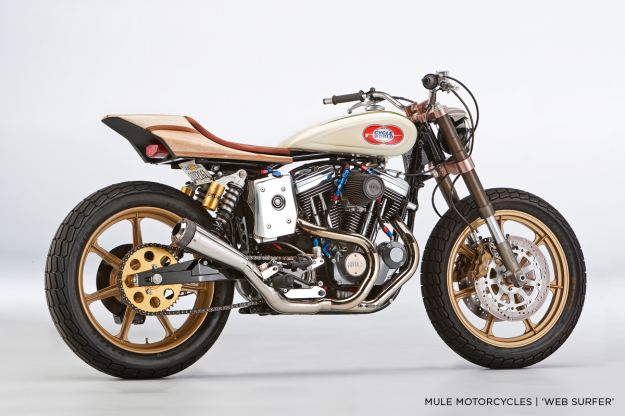
It’s much more romantic to call yourself a custom motorcycle builder than a mechanic, but don’t skip over the basics—there’s a huge time investment up front that you need to be willing to make. Also, the current design trend of just removing parts, wrapping the pipes and painting everything flat black is kind of a cheat. Designing parts that have to function and actually be installed back ONTO the bike. That’s what separates the men from the boys.
Hageman: My advice for new builders: as long as you have the passion, and understand it’s no easy road, you can do it. I’ve been building for years and still just get by. There are so many other things to do to achieve success besides just building bikes—promotion is huge and media coverage is a must to survive.
Rogers: I’ll never forget a successful photographer preaching a dispiriting sermon to us at art college back in the 90s. “Look around, most of you won’t make it,” was the upbeat message. If you’ve got time on your side, a desire to learn, an aptitude, and most importantly, passion, you have every chance of having a fulfilling career.
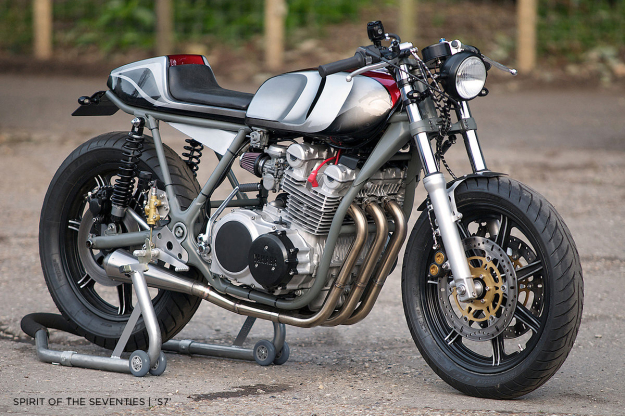
If you want to work with others find the best, be proactive, be polite, and be persistent. If you already have a successful career, a young family and a fat mortgage, stay where you are and commission a bike from the guys who need your business!
Yeh: Stay hungry, keep studying, stay up to date, and know what’s happening and what today’s standard of quality and technology is, so that you know where you stand. Also understand yourself, your strengths and weaknesses—make the most of your strengths and figure out how to hide your weaknesses.
Stulberg: Even though I ultimately committed to taking this hobby/passion seriously and not going back to a ‘real’ job, I can’t say it was a pondered decision between some other direction and THIS. For me (and Stefan, my partner in Revival), it was simply an inevitability that we accepted as something we had to try.
Nobody knew, especially us, that we’d actually end up in-demand enough to consider it a career. Every time we sit around and feel sorry for ourselves for our intense schedule, the challenges that face us daily or how hard it’s all been, we come back to the same point that neither of us actually expected it to go this well ever.
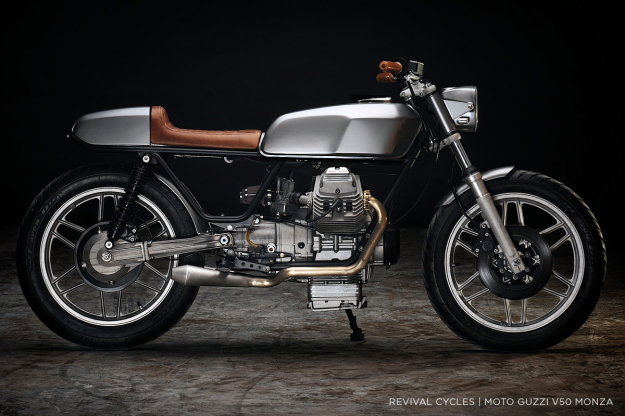
The short answer: Follow your passion. And if your passion happens to be motorcycles, and you have a group of supportive and talented people around you, and you’re the perfect combination of talented, stubborn, willful, confident and stupid, then perhaps you can stick through the tough times and get to some level of self-sufficiency.
Wrenchmonkees: First of all: make your family and friends believe in you. Believe in yourself and believe in the decisions you make. Stay humble, work hard and maintain your integrity! Don’t think you can do everything yourself. Team up with people who are better than you, and don’t think that their strengths are your weaknesses—just make sure you are on the same mission!
Be stubborn and at the same time willing to make sacrifices—but don’t price your work too low. Then everything will be OK. (No promises, haha!)
What influences your current aesthetic and design philosophy?
Hageman: My influences and designs come from bikes I remembered when growing up in the ’70s and ’80s—bikes that I would sit and stare at in awe, just waiting to get my hands on the next issue of the latest motorcycle magazine. I rely on the memories and draw from images left in my head, and work towards those images that made me smile when I was younger.
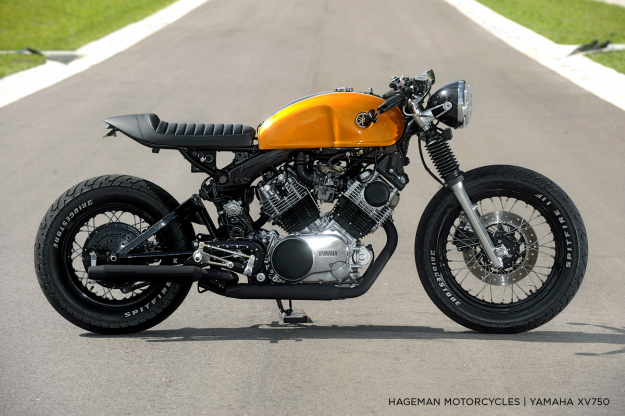
I like to combine those ideas and thoughts with modern technology; I consider myself a mechanic first, and designer after that. Simple, reliable mechanics of the bike come first, then design follows—I have no use for an un-ridable bike.
Pollock: My philosophy is a product of competition: make it simpler, faster, lighter, more durable and trouble-free. Twenty-three years in aerospace gets you into the habit of paying attention to even the smallest details that may never be seen—but I’ll know that it’s right. Looking at other builders’ work, simplicity in solutions is where the real talent is and what I search for. Simple solutions are the biggest influence, followed by MotoGP and hot rods.
Stulberg: The balance I try to achieve is a combination of subtle elegance and superior functionality. I’ve found that it’s easy to slap together a brightly colored, bedazzled machine that has fancy bright paint, knobby tires, and flagrant anodized gold-colored accessories to catch attention and Internet ‘notoriety.’
On the other hand, it’s also possible for a skilled designer or sculptor to craft a fine piece of well-proportioned art that will roll down the road OK, but will certainly never go out and win even the easiest of races or garner an effortless weekend of carving up twisties on your favorite switchback road. I believe it takes a metered, skilled and careful approach to combine performance, design and engineering to actually make a rolling sculpture simultaneously astound the eyes AND perform better than the average production machine.
Rogers: We’ve always believed in the mantra that ‘less is more’. What’s been really interesting over the last couple of years is the increasing mix of sports bikes that we’ve been asked to work on—models like the Triumph 675 and KTM Super Duke have given us the opportunity to diversify and push the boundaries.
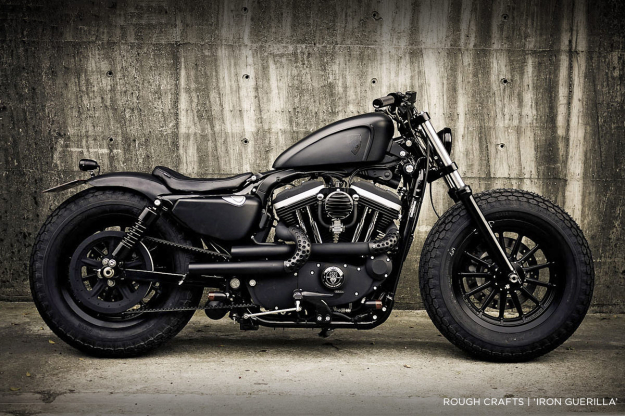
Yeh: Cars, bikes, furniture, sculptures—everything around me that was designed and made by humans affects me every single day. As my brand Rough Crafts grows, I need to take all that in and re-construct it into a cohesive ‘look,’ which to me has always been a main guideline for constructing a brand.
Wrenchmonkees: We are constantly working on our style, trying to refine our simplicity and designs. Our biggest influence is all kinds of bike builds out there. We love to work out new solutions and ideas, but we also ‘borrow’ design and fabrication solutions that others have spent time developing. It’s difficult to pinpoint what inspires us, everything from nature to man-made designs are inspiring!
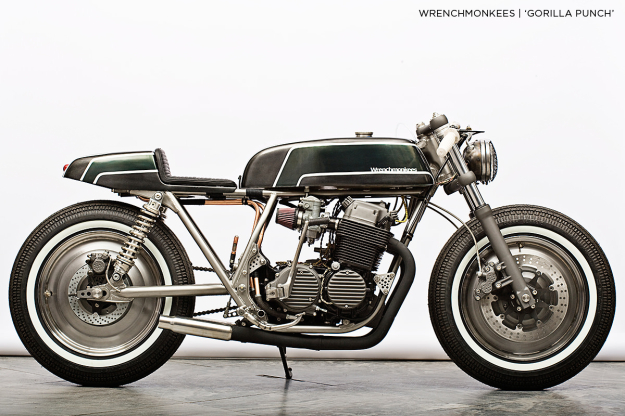
And of course we would love to mention all the idols we have, but the list is long and our tastes are wide: from Valtoron in Spain, Death Spray Customs in the UK and Hidemo in Japan, to Brawny Built in the USA.
Is there a motorcycle you wouldn’t dare customize? Or is anything fair game?
Stulberg: I’d say most everything is fair game that has been mass produced. I wouldn’t want to disrespect a fine bespoke machine built by anyone and cut it up to suit my tastes, I’d rather start over with my own design that might be ‘inspired by’ instead of ‘taken from’. I would NEVER touch a Moto Guzzi V8 or other storied racing bike—they were made as the manufacturer/builder intended, and to change them in any way is to remove the story that goes along with their racing lineage.
Having said all that, I’d REALLY like to take on a Ducati Apollo custom job.
Wrenchmonkees: Everything is fair game, no doubt, but there are bikes we wouldn’t mess with to the same extent than we usually do, simply because they are too complicated or pure masterpieces in our minds! Who wouldn’t love to own a factory Ducati 1199 Superleggera?
Yeh: It’s all about ability and possibilities—when I see a bike I see the potential of the bike, but it has to go back to the mechanical. Nowadays all performance bikes are built to such a high standard with all the electronics and finest details, if the technology and mechanical aspect is not an issue I think anything is fair game—there’s no bike too cool to custom.
Pollock: I’d take a saw to just about anything, although just this year I’ve had to say “no” to two requests. When you transition into building bikes as a business, if something looks like it’s gonna be a ‘time vampire’, it’s best to just say “no” and walk away. People usually come to me having seen what I’ve done in the past, so I don’t get requests for choppers or brat bikes. That said, I’m doing my first bobber and it’s really fun. Won’t be the garden variety though—a little more high tech.
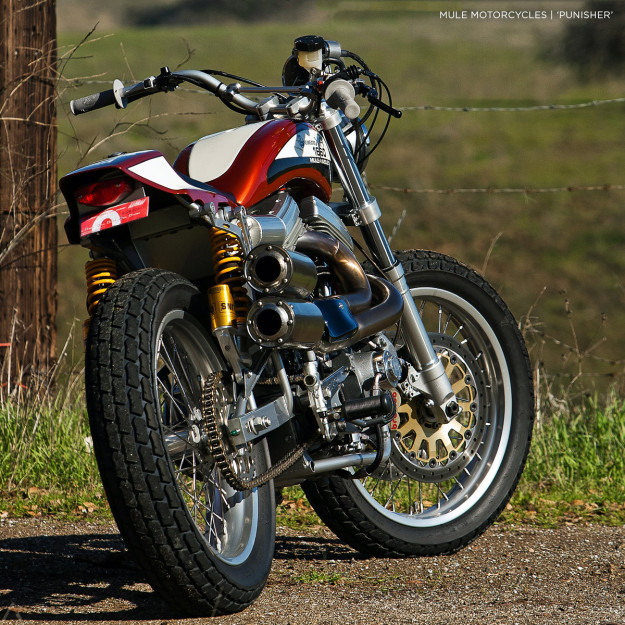
Hageman: There is absolutely no motorcycle I wouldn’t touch. I do think though, that rare vintage survivors should be left as such. I only modify or alter bikes that are either plentiful or un-restorable.
Rogers: We’ve already faced that kind of scenario, we recently completed a ’76 BMW R90S. It’s an iconic machine and Kev and I both felt that chopping it about would be the wrong thing to do. We didn’t even need to have the conversation. Instead, the bike was given a subtle cosmetic overhaul but with significant engine and brake modifications within, we call it a resto-custom. There are different approaches for different machines—we won’t be making a Desmo flat tracker any time soon, but we would give one a makeover that emphasized its existing beauty.
What’s the most expensive lesson you’ve ever had to learn?
Wrenchmonkees: Plenty of lessons to choose from (see our answer to question #1), but one big lesson is that you should always match your expectations with the client’s, and make sure they know what extent of customization they are getting with the price level they are willing to pay!
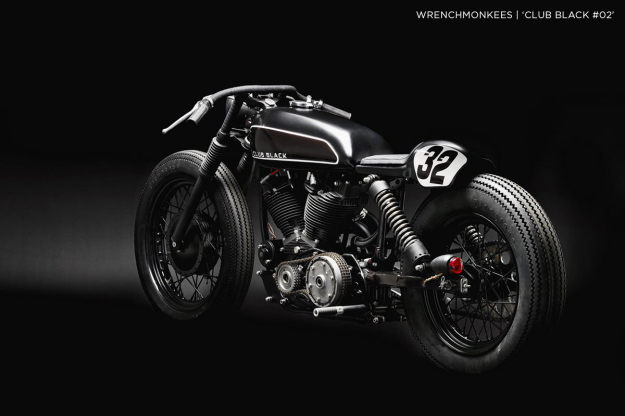
Yeh: Don’t consider the customer’s opinion to be the top priority over your own style—building a bike for a customer without your own style and taste is only making quick money and not helping you as a builder, or your brand, grow. Most of the time you’ll end up hating the bike, and the customer might not be happy either.
Hageman: Oh man, too many lessons to list. All I can say is: once you find good, reliable vendors, treat them right and be loyal. If you actually come across a kick-ass painter, powder coater or upholsterer—remember there are too many out there that aren’t so “kick-ass.” I’ve flushed a lot of money down the toilet getting things redone, over and over to get them right.
Stulberg: Picking the wrong people to work with has always been the most expensive thing for me—I try to surround myself with people that I want to emulate for the right reasons. In my experience, I can’t lose if I trust people that have earned collective respect in true and genuine ways rather than those that simply appear to be so from afar, or dare I say ‘on the internet’. If they don’t stand on their own as someone genuinely and consistently impressive in their own right, then they aren’t likely going become amazing at anything with or without your influence.
Also, if you’re looking for something crazy simple or mechanical, then I’d say that communicating DIRECTLY what you want or feel about something is the ONLY way to live. I’ve learned time and time again that the more vague I am, the more opportunity and money I lose and the more disappointed I stand to be.
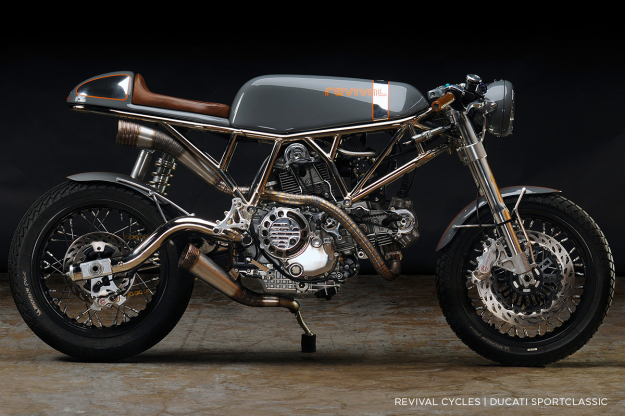
Rogers: In the early days we had more knocks than Rocky Balboa! In any business you come across unscrupulous people but you gave to pick up the pieces and move on. We don’t work on older bikes so much any more, but one thing I always strongly recommend is an engine rebuild, particularly on a newly owned bike, especially if it has just had a restoration by an enthusiastic amateur!
Pollock: Don’t be in a hurry when designing or drawing a blueprint. Getting 20 hubs made that are slightly off, or triple clamps, or a frame design, or anything where you get a large quantity of parts made, and when you get deeper in you find the mistake—that’s costly. For 15-18 years or so I was doing one-offs, so it didn’t matter as much—mistakes are gonna happen, right? Multiply it times 20 or 50 and you’ll be stayin’ awake at night, but you have to come up with a work-around and keep moving forward.
If you had to customize a brand new (2014/2015 spec) motorcycle—what would you pick, and what would you do with it?
Yeh: Rough Crafts is all about late model Harleys at this point, so this is easy, and I’m doing it right now: a 2014 Harley-Davidson Dyna Street Bob. But a BMW R NineT build sounds fun too. For the Dyna I’m running all the trick performance suspension and brake packages, blending them with a ‘special ops’ edgy look, while still keeping the Rough Crafts style intact.
Pollock: The less complex a bike is, the more fun it is to start modifying. So many bikes you see new builders start out with are 70’s air-cooled singles, twins or in-line fours—they are simple mechanically and you can get your head around them while making huge upgrades or improvements. I still think that way. Though I would like to do the new Yamaha FZ7 or the FZ9, and I think many of the current sport-bikes could look really good as well if you remove all the plastic and get back to motorcycle basics. That’s why I like street trackers: no B.S. to muddy up the waters.
Hageman: If I had to pick a new bike, hmm … I’m infatuated with the SR400, a typical retro/modern build. I like the lightweight small cc idea. I think it’s got a ton of potential.
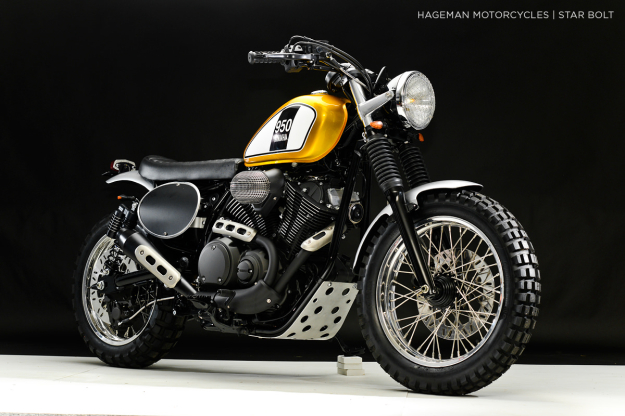
Rogers: It would be great to get our hands on a new Speed Triple and adapt our kit that’s in development for the previous generation. Performance custom engineering sits very well alongside the increasing numbers of Triumph classic models, Kawasaki W800s, Moto Guzzi V7s, etc.
Wrenchmonkees (Bech): I would love to build an uncompromising version of our Monkee #28 to use for travelling and as my everyday commuter! A 1200 Harley Sportster, with an upgraded home-built alloy tank, Öhlins suspension, Brembo brakes and plenty of usable travel features!
Wrenchmonkees (Nielsen): As I really love the Ducati engines, I would go for the new 2015 Scrambler. I don’t know what it looks like yet, but I’m sure it’s possible to make a leaner and cleaner version! Low and long, spoke wheels (17″ rear, 18″front), aluminum fenders, and intake and exhaust upgrades—a bike for commuting, but also the perfect bike for the small winding country roads outside Copenhagen!
Stulberg: I naturally trend towards underdogs—I choose heavy and bloated for transformations as the end result is then more severe and satisfying. Right now we’ve got our sights set on a complete custom build of the new Moto Guzzi 1400 California. The technology Guzzi has used to make such a big bike feel nimble and responsive is fantastic and I’d like the chance to change the entire shape and design philosophy while simultaneously slicing a hundred pounds off of it to see just how drastically different we can make it. Ewan McGregor has one and he’s the man we hope to build a complete custom for soon—I hope he’s listening.
Another choice would be the Ducati Desmosedici GP bike. Sinking my design chops into the simple image of a GP bike with vintage flair and bare aluminum bodywork has my imagination reeling.
With thanks: Wrenchmonkees | Revival Cycles | Mule Motorcycles | Rough Crafts | Spirit of The Seventies | Hageman Motorcycles
Our first Bike EXIF panel explored the state of motorcycle design today.